Van Helsing
 for nonstop creature action violence and frightening images, and for sensuality.
for nonstop creature action violence and frightening images, and for sensuality.
Reviewed by: Keith Howland
CONTRIBUTOR
| Moral Rating: | Offensive |
| Moviemaking Quality: |
|
| Primary Audience: | Mature-Teens Adults |
| Genre: | Horror Action Occult |
| Length: | 2 hr. 20 min. |
| Year of Release: | 2004 |
| USA Release: |
May 7, 2004 |
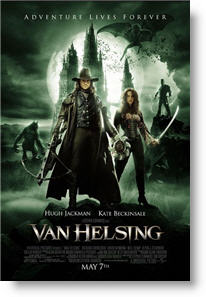
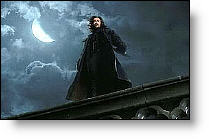
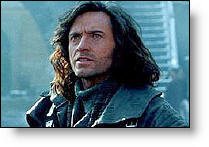
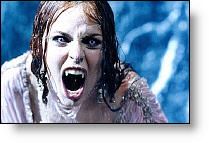
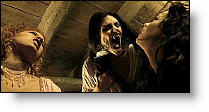
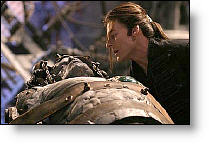
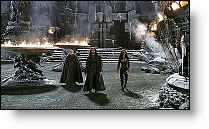
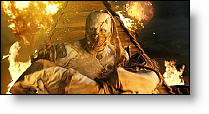
| Featuring |
|---|
|
Hugh Jackman Kate Beckinsale Richard Roxburgh Elena Anaya David Wenham |
| Director |
| Stephen Sommers—“Homeward Bound;” “The Mummy Returns;” “The Mummy;” “Deep Rising;” “The Jungle Book” |
| Producer |
| Bob Ducsay |
| Distributor |
Van Helsing (the character) has come a long way. He was introduced in Bram Stoker’s novel Dracula in 1897, as Professor Abraham Van Helsing. He was from Amsterdam, a Doctor of medicine, philosophy and letters, a philosopher, metaphysician, “one of the most advanced scientists of his day,” and a man of “all-embracing sympathy.” A stage play of the novel, dramatized by Hamilton Deane and John L. Balderston (1927), contained this physical description of the character: “A man of medium height, in the early fifties, with clean-shaven, astute face, shaggy grey eyebrows and a mass of grey hair which is brushed backward showing a high forehead.”
Now, in the movie “Van Helsing,” the character is portrayed by thirty-something Australian Hugh Jackman (sounding American), with thick, long brown hair, stubble, and a cool outfit complete with wide-brimmed hat. His name is Gabriel Van Helsing, and he has no memory of who he is. He seems not to be a doctor, professor, or man of science, but he has an array of high-tech (for 1887) weapons at his well-muscled disposal to use in his ongoing mission to vanquish monsters at the behest of a secretive branch of the Vatican.
Dracula is planning some unknown evil scheme (of course!) that depends upon the contribution of Frankenstein’s Monster. The Wolf Man is on hand as Drac’s lackey to hunt down and slay undesirables who attempt to thwart his scheme. Chief amongst these is a family that has been trying to “kill” Dracula for 400 years, but of which only two remain alive: Anna Valerious (Kate Beckinsale) and her brother, Velkan (Will Kemp). It is later revealed that Dracula had made a pact with Satan to “live” forever (as undead), while the Valerious family had made a pact of their own (with St. Peter, I think) that promised salvation for their entire family if Dracula is killed. [This is, of course, an entirely fictional proposition. Jesus said, “I am the way and the truth and the life. No one comes to the Father except through me” (John 14:6). Salvation comes only through faith in Christ, not by any “work” that man or woman can do (Romans 10:9-10; Ephesians 2:8-9), and it is available to all people by God’s grace (John 3:16).]
Van Helsing is briefed on the Dracula situation and sent by his priestly dispatcher-along with a gadget-making friar named Carl (David Wenham)-to Transylvania, where he meets up with Anna and inevitably (1) saves her life and (2) teams up with her to fulfill her family’s quest to kill Dracula.
From beginning to end, “Van Helsing” is full of violence, as you would expect from a movie of this sort. Unnecessarily, it often dwells on disgusting details, such as bursting vampire bats, impalements, rotting flesh, and the transformation of the Wolf Man, which involves his human skin ripping off to reveal the hairy beast beneath. (Inexplicably, it works the other way, too: His fur sheds to reveal human skin underneath when he turns back to a man.)
The film contains only a couple of mild profanities. The name of God is used vainly a half-dozen times, as various people exclaim shock at some monstrosity or another. (The fourth commandment prohibits misuse of God’s name: Exodus 20:7.)
Sex and nudity are also at a minimum, although irrelevant to the story. One male character’s backside is partly exposed in one scene (albeit computer generated), and the “brides” of Dracula are dressed provocatively, with ample cleavage occasionally on display. There is one instance of a woman touching a man suggestively, and another instance of implied fornication: After Carl saves a young woman’s life, she asks how she may return the favor, and he whispers something in her ear. They are next seen awaking in the same bed. (Sex outside of marriage is forbidden by Scripture [Exodus 20:14, Matthew 5:27-28] and is meant to be only between a man and his wife [Matthew 19:4-6, I Corinthians 6:16], as part of the covenant of marriage instituted by God at Creation [Genesis 2:18-24].)
“Van Helsing” is the first “summer” movie of 2004, and as with many recent summer action films, it hits the ground running (there are no opening titles) and hardly pauses to breathe. Character development is incidental, and exposition occurs only when convenient at a particular plot twist. (Having foreknowledge of Frankenstein, Dracula, the Wolf Man, etc., may not be an asset coming into this film, because it makes up all new rules as it goes along.) All aspects of the story are subservient to an onslaught of eye-popping visuals, some of which are perhaps cheesier than the filmmakers would have wished. In the end, the film is more like a theme-park ride than anything else. Indeed, I can imagine that Universal Studios, Florida, is constructing a “Van Helsing” ride as you read this.
The film’s hodgepodge of action sequences “borrows” elements from many previous films. (Is it plagiarism, homage, or parody? You make the call.) Frankenstein, Dracula, and Wolf Man movie references are to be expected-indeed, the opening sequence comprises near-recreations (in black and white!) of the climactic scenes in Universal’s 1931 movie “Frankenstein” (“IT’S ALIVE!!”), followed by a scene akin to the climax of Hammer’s 1960 “The Brides of Dracula.” But there are other allusions made to outside the genre: Fans of the James Bond franchise will recognize one scene, and a certain action sequence replicates stunts from “Stagecoach” and “Raiders of the Lost Ark” in quick succession.
Alas, taking scenes and inspiration wholesale from film classics and putting them in a blender does not make a classic film, as this movie ably proves. There are many spectacular set pieces and tense moments, but without character development or sensible plot mechanics (how can there be a full moon for three nights, then one night without, followed by another one?) the film is ultimately a shambles.
Some curious spiritual references are made throughout the film. Some are obvious, such as the presence of the Vatican and references to Satan, Purgatory and Hell. (In reality, Satan and Hell exist [Job 1; Zechariah 3; Matthew 4; Revelation 20; Matthew 5:22-29, 10:28; etc.] but Purgatory does not.) But there are other subtler points. For instance, it becomes clear that Van Helsing is over 1800 years old, and he is referred to at one point as “the left hand of God.” That his name is Gabriel may be meant to suggest that he is an angel, although this is never clearly stated. (There is an angel named Gabriel in Scripture [Daniel 8:16; 9:21; Luke 1:19, 26], who serves as a messenger and interpreter of God’s plans.) “Gabriel” means “strong man of God” or “young man of God,” but Van Helsing is not clearly a man of God. In fact, when asked if he is a murderer or a holy man, Van Helsing replies, “Perhaps a little of both.”
The film thus seems to want to blur the line between good and evil, but at other times it makes clear distinctions: Van Helsing says he can only kill what is evil and that he can “tell” if someone is motivated by evil, thereby clearly suggesting that evil exists and that it is an inward trait in some. (The Bible professes this, although more than just some are inwardly evil: Every person is a sinner [Romans 3:23], and this is an innate, inward trait: “Every inclination of his [man’s and woman’s] heart is evil from childhood” [Genesis 8:21; cf. Jeremiah 17:9].)
Dracula mocks God and Scripture in the movie, at one point saying, “Do unto others.before they do it to you.” This is a contradiction of Jesus’ teaching to “Do to others as you would have them do to you” (Luke 6:31). To Jesus this “sums up the Law and the Prophets” (Matthew 7:12), and thus represents the pithiest maxim for doing good. Of course, it is appropriate that a character in league with Satan would say what is opposite to what God calls good, since Satan is the “author of lies” (John 8:44) and attempts to lead “the whole world astray” (Revelation 12:9) with his lies.
Sadly, the movie does not treat God or the Bible with utmost respect. Once when Van Helsing and Carl are doing something that Carl suspects is sinful, Van Helsing says out-of-hand that “God will forgive us,” though he shows no sign of repentance for his action. The Bible assures people that God forgives those who repent and confess their sins: “If we confess our sins, he is faithful and just and will forgive us our sins and purify us from all unrighteousness” (I John 1:9).
Somewhat unexpectedly, a character that in part resembles godliness is Frankenstein’s Monster. Trapped beneath the ground for a year, he has been left with only a Bible to read, from which he once quotes part of Psalm 23-“Yea though I walk through the valley of the shadow of death, I will fear no evil”-although he then veers from the text to say that he will kill all those who are doing evil to him. However, the character has a high regard for the sanctity of life, and although he has a strong desire to live he willingly offers his life in exchange for the preservation of others, and also puts himself in great peril to save another. Van Helsing, Anna, and Carl exhibit similar heroism.
This film is difficult to recommend, because it is so muddled and overly violent. However, it does present some potential points for discussion about the nature of good and evil and what people must do to be saved and go to heaven. And if you like amusement park rides.
Violence: Heavy / Profanity: Minor / Sex/Nudity: Minor


In fact, and I thought this was a strong point in this movies favor from a Christian point of view, Van Helsing is regularly and clearly shown praying for the very monsters he has been called upon to destroy. He is also shown as being willing to die to protect the Frankenstein Monster once he realizes that the creature is not evil, and is actually good hearted, despite his inhuman appearance. Self sacrifice is also constantly shown on the part of the good guys as they frequently risk their own lives in order to save the lives of others; including people they don’t even know. I thought it was a very good film.
[Better than Average/5]
As for Dracula and his brides… well, yes they are absolute evil incarnate. But isn’t that what vampires are supposed to be? It’s not like they were portrayed in a positive light! They were great villains that you just love to cheer against. So in the end, I thought this film was awesome. Take some non-squeamish friends, bring your popcorn and soda and have a great time with it!
[Better than Average/5]
***SPOILER*** It is implied that Brother Carl forsakes his vow of chastity. If the same grotesque imagery of the director’s past films (The Mummy) does not bother you, and you can handle a story with a hearty emphasis on vampires, Van Helsing is a ton of fun. It’s not going to win any original screenplay awards, but it’s fast, funny, and just the kind of popcorn movie that you walk out of smiling.
[Better than Average/4]
[Very Offensive/4]
[Extremely Offensive/3½]
[Very Offensive/3]
[Average/1]
[Average/1½]
[Very Offensive/3]
[Average/3½]
[Average/3]
[Average/5]
[Very Offensive/3½]
[Average/4½]
[Very Offensive/4]
[Average/3]
[Better than Average/5]
[Average/4]
The actors and actresses were spectacular. Hugh Jackman was wonderful, as per usual, and Richard Roxburgh WAS Dracula practically. Kate Beckinsale and David Wenham did exceptional performances as well. And Silvia Collaca, Josie Maran, and Elena Anaya were wonderful as Dracula’s brides, if not a bit too, uh, suggestive.
Frankenstein’s Monster really wasn’t the monster—despite being created from the parts of seven men, he still had a heart and he uttered a verse from the Bible when he was in trouble, showing faith. And doesn’t everyone say that God redeems everyone if they ask for it? Frankenstein’s monster didn’t even do anything wrong! It’s not exactly his fault if he was created the way he was, is it? More likely Victor Frankenstein and Dracula’s, if you ask me.
…this film is very funny, very adventurous, and has lots of action, and that God is mentioned in nothing but good light from the very start. There! Finished!
[Better than Average/4½]
[Very Offensive/5]
[Average/3]
Let’s review: Gabrial Van Helsing is a Catholic and, unlike many movie characters, this has an effect on his life (he only kills evil things, and even then he prays for them, and he does not indulge in sexual sin with his girlfriend).
Frankenstien’s monster repeats psalm’s 23. The movie is just plain fun. Van Helsing is who every boy wants to be like. Friar Carl supplies the best comic relief since Pippen in Lord of the Rings. I like the blend between classic and modern filming (the black-and-white beginning is a nice touch). The world the characters inhabit is beautiful. This movie is a roller coaster ride. It makes its own rules, and I was happy to play by them. I expected it to be much more offensive than it was. I would still only recommend it to kids 13 and up, though. It is quite violent. That aside, though and you have one fun, amazing movie. I was smiling through most of it. YEEHAW!
[Average/5]
I mean, come on, what film isn’t slightly objectional? I saw parts of The Passion, and it has a lot more violence and gore than Van Helsing. It *did* focus a lot on the stabbing of steaks, but it does have humor and a lot of action, so it’s not bad. Really, what’s wrong with all of you who rated this negative? The lowest you can get on the rating (opinion wise) is Neutral, because I can understand that. I noticed that the Lord’s name is used in vain at least eight times (I wasn’t really paying attention, but it was kind of noticeable about the third time or so). And the fangs and steaks and silver bullets were kind of focused on a little more than necessary. We got the picture pretty good—THEY DIED! Overall, however, I have to say it’s the best action film I’ve ever seen. I’ll watch it again any day!
Richard Roxburgh was award-winning as Dracula, Hugh Jackman made the best Van Helsing there ever was and will be, Kate Beckinsale was phenomenal as Anna Valerius, and David Wenham was hilarious as Carl. Quite frankly, it was brilliant. CGI was incredible in this—all though I didn’t think so until after I saw it for the second time—and the stunts, action, and acting was spectacular! Definitely a must-see action film.
There was a few profanities, d*mn and H*ll being almost all of them. Sex was implied, but it didn’t show anything, and there was an amusing scene where-oops, don’t want to give it away!…
[Better than Average/4½]

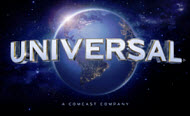
There is no enlightenment to be gained from this movie, and it was never intended and that’s fine. Not every movie can be “Citizen Kane” and, well, this one never tries to be. Okay then. I had one major objection about the movie, one that I normally would merely accept. I am all for women looking good. There are many beautful women in this world, and we can appreciate them without lusting. But I did have a problem with Kate Beckinsale’s outfit. I found it a little degrading to women. Her pants made spandex look loose, is the best way I can describe it. And the vampire brides were just so overtly sexual for no purpose but to be sexual, and that I did not like.See all »
My Ratings: [Better than Average/3½]